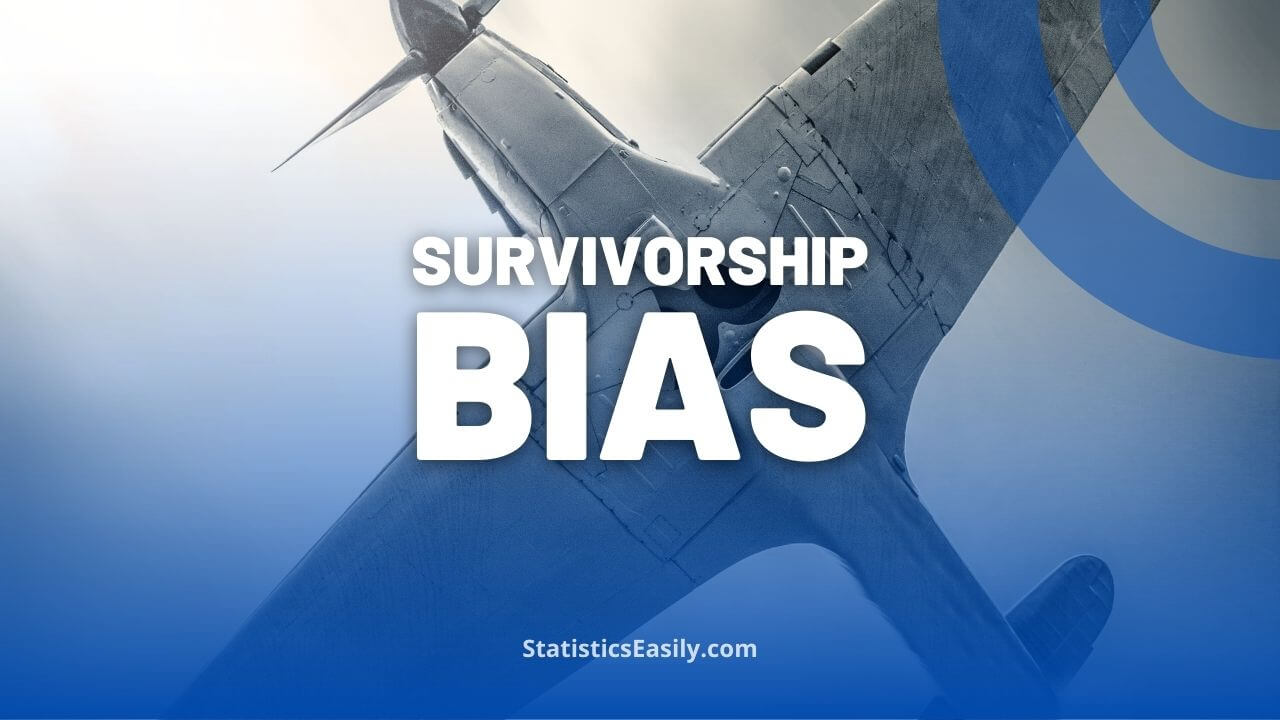Survivorship Bias: A Hidden Pitfall in Data Science and Statistics
Survivorship Bias is a logical error that occurs when we focus on successful outcomes that ‘survived’ a process while overlooking those that didn’t, often because of their absence or lack of visibility. This can result in a misleading representation of data or reality.
Introduction to Survivorship Bias
Survivorship Bias is a common pitfall in Data Science and Statistics. At its core, Survivorship Bias refers to the logical error of focusing on the subjects that made it past some selection procedure and overlooking those that did not, generally because of their lack of visibility. There are multiple ways in which this can result in incorrect conclusions.
In data analysis, for instance, Survivorship Bias occurs when we base our understanding on an unrepresentative subset of data. This may happen because the missing data is hidden, overlooked, or inaccessible. The danger of this bias is that it paints a skewed and potentially misleading picture of reality.

Highlights
- Survivorship Bias refers to the logical error of only considering ‘survivors’ in data analysis.
- Survivorship Bias can lead to skewed and potentially misleading interpretations of reality.
- The impact of Survivorship Bias can be profound, causing erroneous decisions and conclusions.
- Detecting Survivorship Bias involves questioning missing data points and unsuccessful cases.
- Correcting Survivorship Bias requires filling data gaps and encouraging transparency.
Ad Title
Ad description. Lorem ipsum dolor sit amet, consectetur adipiscing elit.
The Impact of Survivorship Bias on Data Analyses
The impact of Survivorship Bias on statistical analyses can be profound. It can cause us to make ill-informed decisions or come to incorrect conclusions if not addressed.
Consider the example of an investment fund that only reports on its successful portfolios. This can lead to an exaggerated view of the fund’s skill, as it does not account for the unsuccessful portfolios. Survivorship Bias has blinded us to the actual performance by focusing only on the surviving subjects. This can lead to erroneous decision-making, such as investing in funds based on an inflated success rate.
The insidious nature of Survivorship Bias is that it can be pervasive in any field where we analyze data — from health studies to business models and even historical events.
Case Studies Demonstrating the Survivorship Bias
One of the most famous examples demonstrating the effects of Survivorship Bias involves WWII aircraft. During the war, the military wanted to add armor to their planes. They analyzed the returning planes and considered adding armor to the parts that had taken the most fire.
However, a statistician named Abraham Wald pointed out the fallacy of this plan. The military was only considering the aircraft that had survived their missions. The places where these planes had been shot were the areas where they could sustain damage and return home. It was the planes that didn’t return whose damage points truly needed the extra armor.
Another case involves the realm of entrepreneurship. When we study successful entrepreneurs, we often hear about perseverance, risk-taking, and hard work. However, countless failed entrepreneurs also embody these qualities. The successful ones are visible, while the failed ones go unnoticed, leading to a false perception of a guaranteed pathway to success.

How to Detect and Correct Survivorship Bias
Detecting and correcting Survivorship Bias requires careful planning and mindful analysis. It begins with an understanding that data, especially in its raw form, may only tell part of the story.
To detect Survivorship Bias, ask questions about the data you don’t see. Are there missing data points or unsuccessful cases that might provide a fuller picture? A balanced view of successful and unsuccessful scenarios can give you a more truthful representation of the facts.
Correcting Survivorship Bias is about filling these gaps as much as possible. Seek out the complete data, understanding that hidden factors may be at play. Encourage transparency and foster a culture of sharing failures as much as successes.
Ad Title
Ad description. Lorem ipsum dolor sit amet, consectetur adipiscing elit.
Concluding Remarks
Survivorship Bias is a pitfall that can seriously skew our understanding of data and lead us to make misinformed decisions. Recognizing and addressing this bias is critical to data analysis, helping us to interpret the world more accurately.
Recommended Articles
Don’t stop here! Dive deeper into the fascinating world of data science by exploring other insightful articles on related topics on our blog.
- Unraveling Sampling Bias (Story)
- Selection Bias in Data Analysis (Story)
- Survivorship Bias – Britannica (External Link)
- The Role of Cherry Picking in Statistical Analysis
- Unraveling Sampling Bias: A Comprehensive Guide
- P-hacking: A Hidden Threat to Reliable Data Analysis
- How Statistical Fallacies Influenced the Mozart Effect
- Selection Bias in Data Analysis: Understanding the Intricacies
- Understanding Random Sampling: Essential Techniques in Data Analysis
Frequently Asked Questions (FAQs)
Survivorship Bias is a logical error that occurs when we only consider ‘survivors’ in data analysis, often leading to skewed interpretations of reality.
It can cause profound effects, potentially leading to erroneous decisions and conclusions, focusing only on the successful or surviving subjects.
Suppose an investment fund only reports on its successful portfolios. In that case, it can give an exaggerated view of the fund’s performance.
It can lead us to a false perception of success by only highlighting successful entrepreneurs and ignoring the countless failed ones.
In WWII, the military’s decision to add armor to parts of aircraft that were shot but survived is a classic example of Survivorship Bias.
We can detect Survivorship Bias by asking questions about the data we don’t see, like missing data points or unsuccessful cases.
To correct Survivorship Bias, seek complete data, consider hidden factors, and encourage transparency in sharing successful and unsuccessful cases.
Ensuring accurate data interpretation and preventing misinformed decisions stemming from a skewed understanding of data is crucial.
No, Survivorship Bias can be pervasive in any field where data is analyzed, from health studies to business models and historical events.
Recognizing and addressing Survivorship Bias is crucial for accurate data interpretation and can help us to better understand the world.








